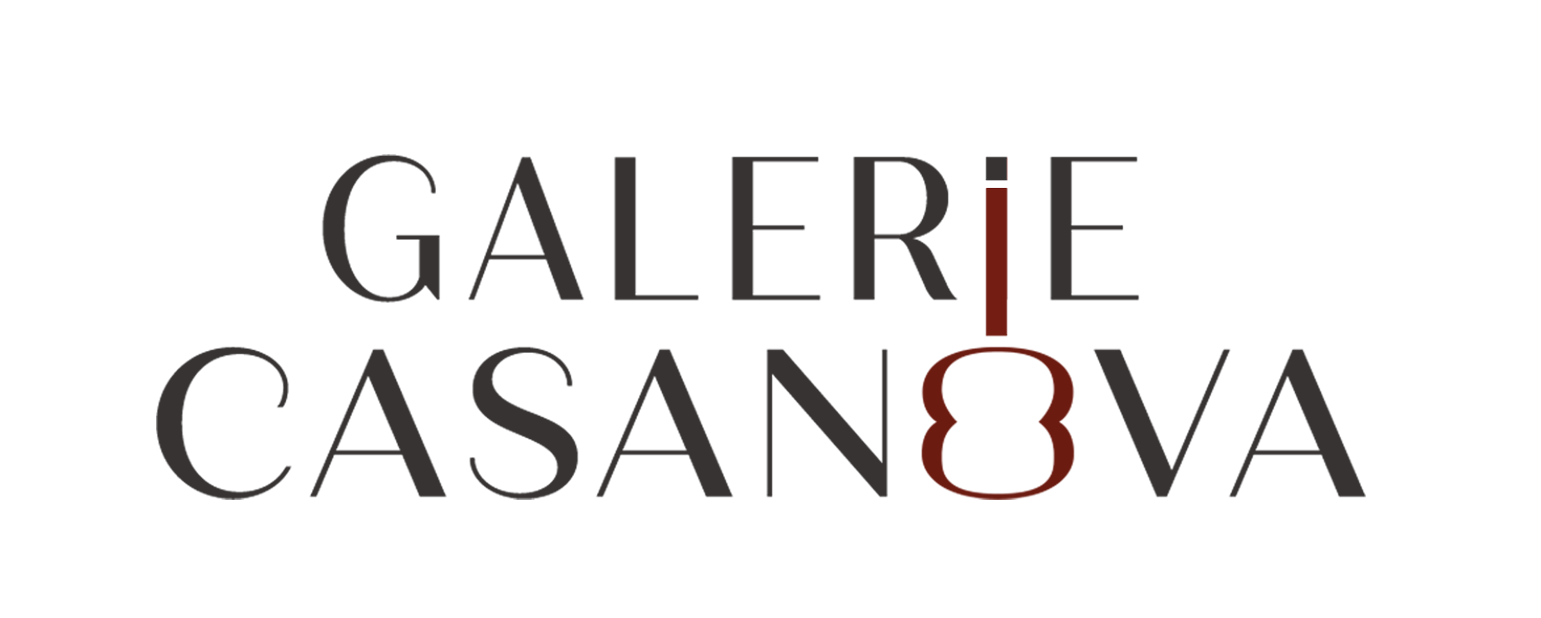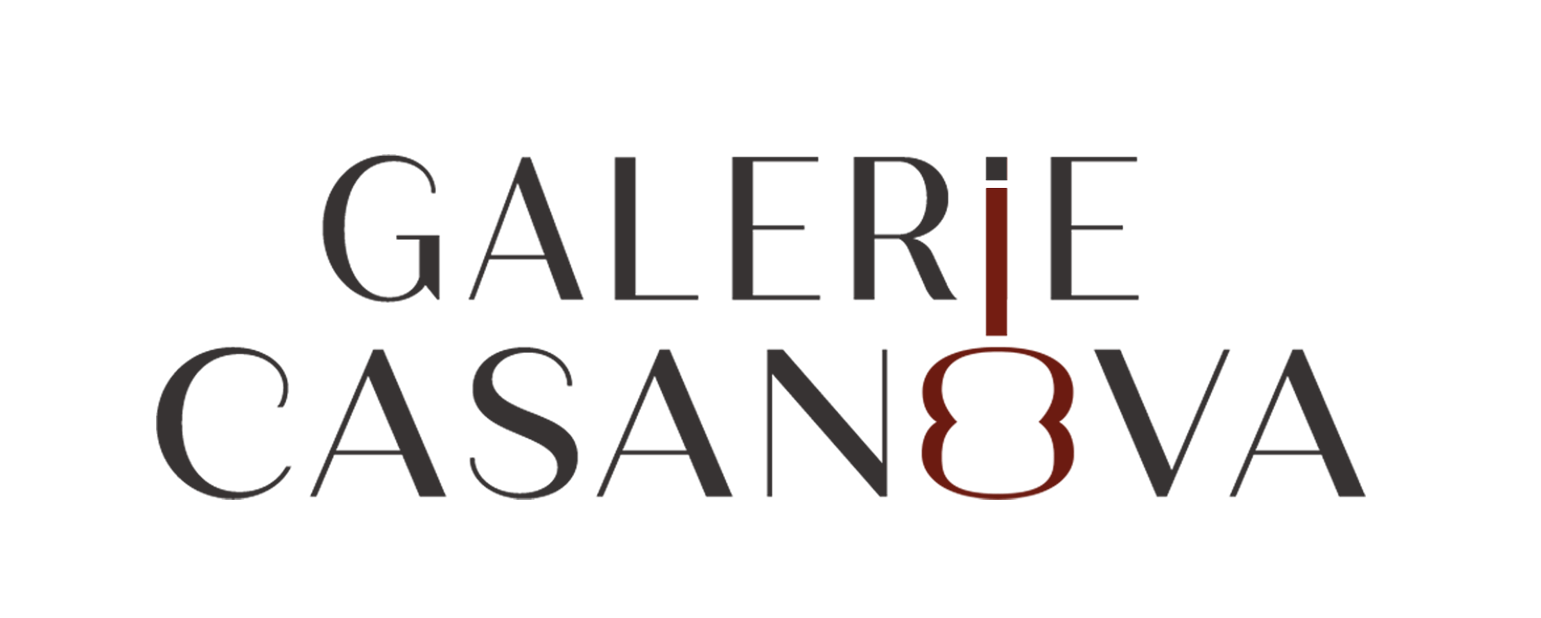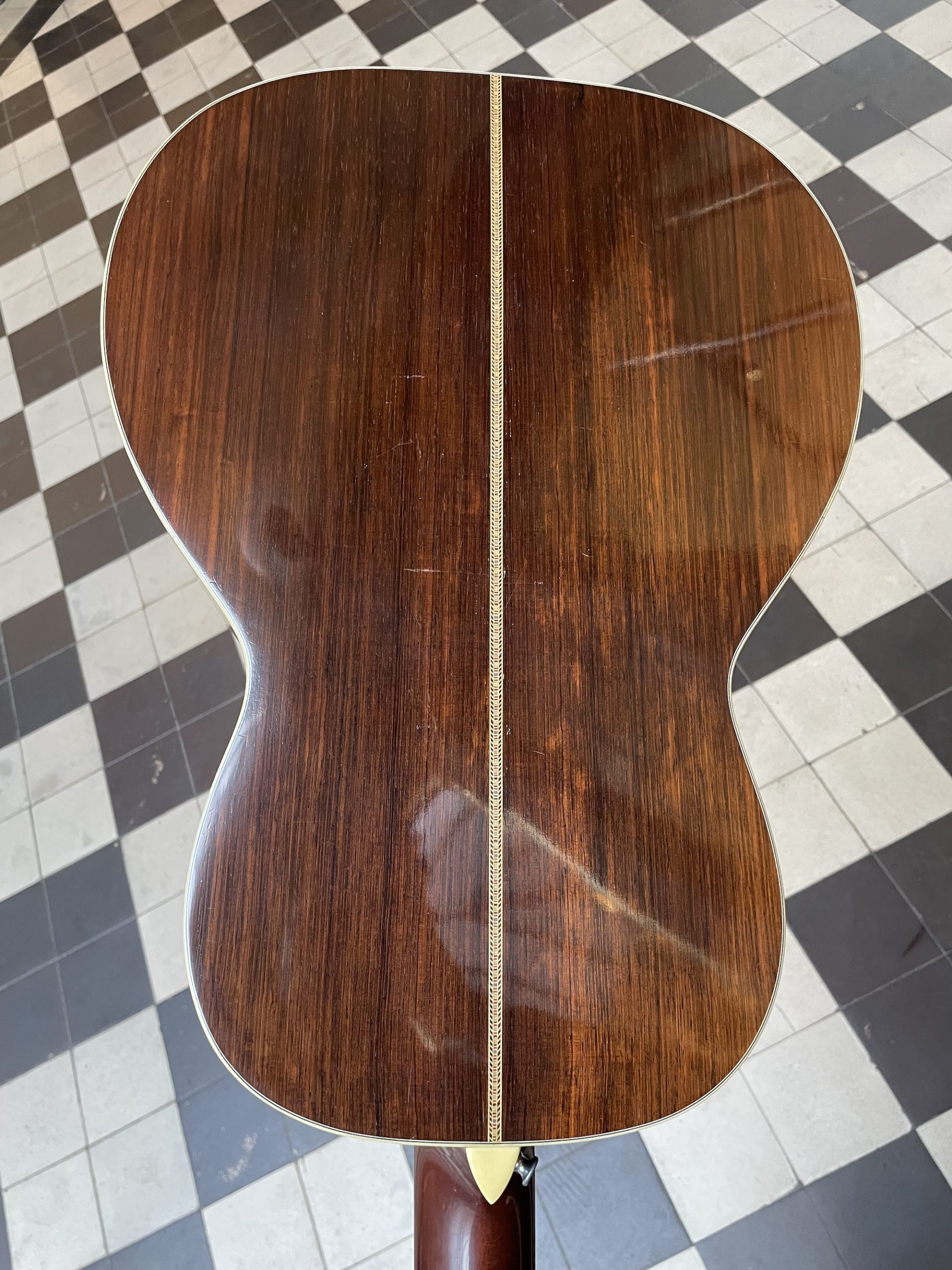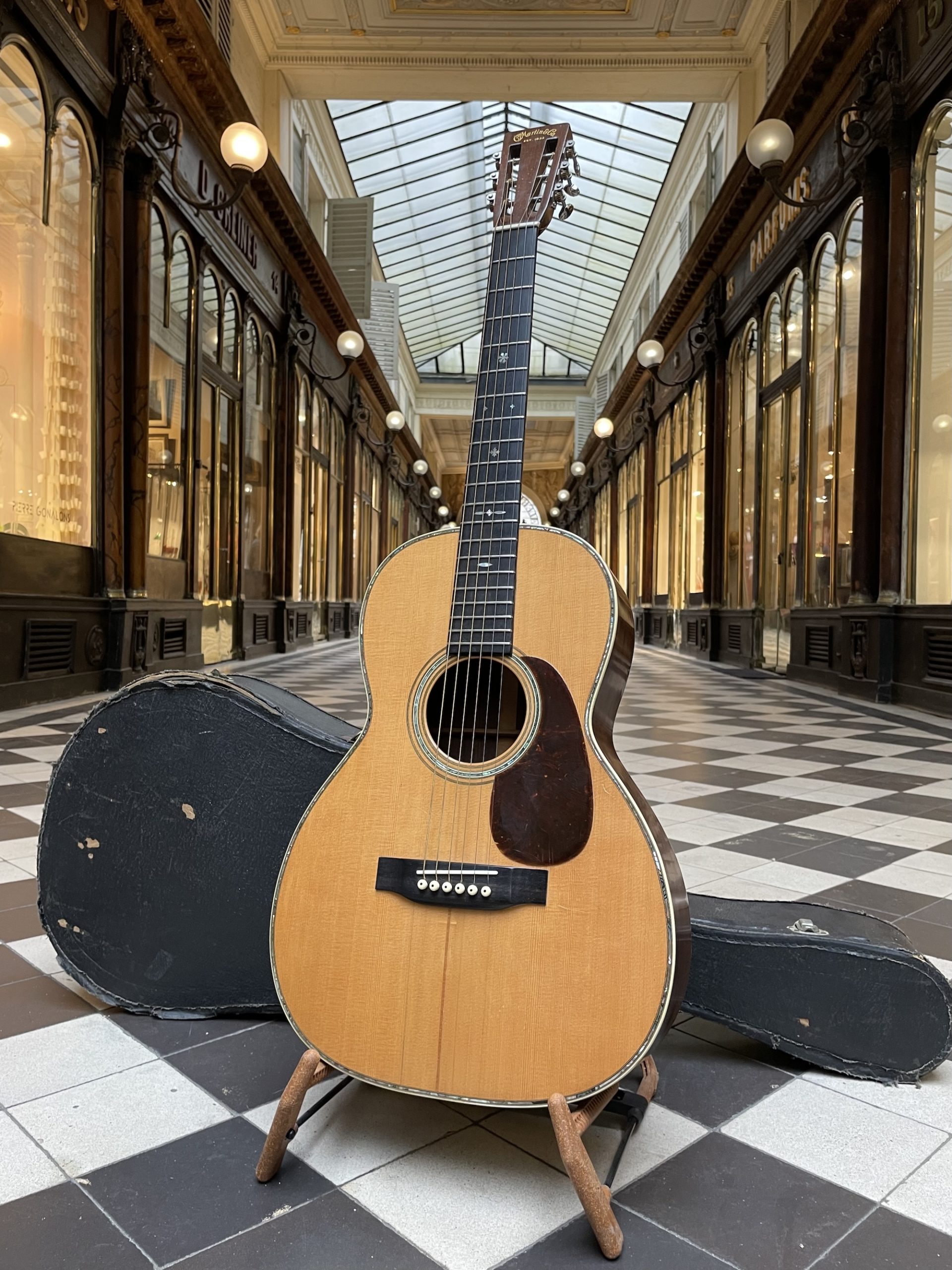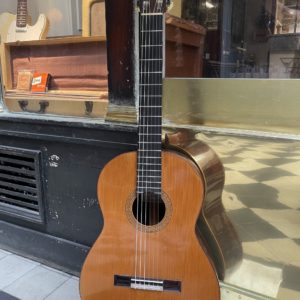Sumptuous Martin 00-40H from 1935, in beautiful state of conservation.
This model, initially Hawaiian and now converted for spanish-style, reflects in many aspects an absolutely formative period for the future of C.F. Martin & Co., which saw its lutherie make an entrance into the modern era. During the two decades preceding the manufacture of the guitar presented here, Martin will have built from the ground up and carried to its climax a whole new line of instruments radically different from anything that had been produced until then: responding to the absolute enthusiasm of Americans for Hawaiian music after it was introduced to them around 1915 during numerous exhibitions presenting the culture and music of the Pacific Islands to a continental audience, the demand for Hawaiian ukuleles and guitars exploded.
Frank Henry Martin sensed this budding trend, and took up the issue in 1915 by offering for the first time a selection of ukuleles in the catalog – the introduction of Hawaiian guitars was nevertheless slower to take place, Martin remaining after all very much opposed to the idea of transforming the appearance and operation of their guitars, firmly established for almost a century as being lightweight instruments dedicated to playing with gut strings, where Hawaiian playing requires metal strings, and consequently the reinforcement of the elements making up the instrument – a major shift for the heirs of C. F. Martin and traditional lutherie imported from 19th century Europe!
The 0-18K and 0-28K models made a timid appearance at the end of the First World War, being in reality so-called convertible guitars since they were equipped with removable metal nuts allowing them to be played either in Hawaiian style, or in Spanish style by removing this piece. From the following decade, the market was flooded with guitars specifically designed for Hawaiian playing, from Knutsen to Weissenborn and their many imitators, and Martin had to abandon their concept of convertible guitars to now assume purely Hawaiian models, fitted with a raised nut and bridge and frets filed down flush with the fingerboard in order to allow slide playing, as described in the 1924 catalog. In this same decade we observe the widening of the range with the introduction of the entry-level model 2-17H in 1927, then the following year the high-end model 00-40H, which stands out by the fact that it is the only instrument dedicated to playing Hawaiian guitar featuring a rich finish with mother-of-pearl purfling and a rosewood body. The production period of the Martin 00-40H extends from the end of the 1920s until 1941, the cut-off year for all Hawaiian models produced in Nazareth: on the one hand supplied for exotic woods, notably koa and rosewood, had become particularly restricted due to the outbreak of the Second World War, and on the other hand the concomitant emergence of amplification and electric instruments, which were initially eminently centered on Hawaiian music, dealt the final blow to acoustic Hawaiian guitars (with the exception, perhaps, of resonator instruments!). As a result, the production totals for Martin Hawaiian guitars are relatively minimal, even more so for the flagship model: over the 13 years they appear in the catalog, only 244 00-40Hs were built, including 24 examples for the year 1935… a rare bird for certain!
Due to this de facto obsolescence of Martin Hawaiian guitars, many of them have been converted over the decades for standard Spanish playing, as is the case on the guitar presented here, in order to perpetuate their use. To this end, the guitar was equipped by luthier Alain Quéguiner with a new belly bridge in the style of the original but only reduced in height and provided with a compensated saddle, a lowered nut, was fretted with frets corresponding to the type used on the Spanish guitars produced by Martin after 1934, and saw the adjustment of the neck angle – at the end of this work, we obtain an instrument equivalent to what Martin describes in its catalog from the early 1930s as a standard model, that is to say featuring the small traditional-shaped body, a neck with 12 frets clear of the body and an open headstock – among the most coveted guitars today! The guitar has been affected over its life by a few cracks on the top, restored and stabilized; its original varnish having disintegrated, it was also professionally refinished with a lacquer finish by Alain Quéguiner; the tuners have been replaced by a Waverley set in the style of the original. As we find it today, this 00-40H has lived a lot but remains intact with its main parts, superbly sounding and functional – it is also a high-end model, almost equivalent to the styles 42 and 45: Adirondack spruce top, back and sides in splendid Rio rosewood, ebony fingerboard decorated with ornate mother-of-pearl inlays, mother-of-pearl purfling around the edge of the table and rosette… An interesting detail, we note on the headstock of the instrument both the C.F. Martin & Co. logo as a decal on the front, as it has been applied since 1934 in gold lettering surrounded by black edging, and on the rear face we finds the traditional C.F. Martin & Co. / Nazareth stamp – according to the history established by Mike Longworth, this element was discontinued in 1935 between serial numbers #59044 and #61181, this 00-40H was therefore built a few dozen of numbers only before this change went into effect.
The guitar has been fully set up for playing in our workshop, work including the planning of its frets and the adjustment of its action and its intonation at the nut and saddle. Sold in its original chipboard case, denoted style B in the period catalog.
